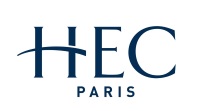No 859: Equity and cash in intercorporate asset sales : theory and evidence
Ulrich Hege (), Stefano Lovo (), Myron Slovin and Marie Sushka
Abstract: the authors develop a two-sided asymmetric information model of asset sales that incorporates the key differences from mergers and allows the information held by each party to be impounded in the transaction. Buyer information is conveyed through a first-stage competitive auction. A seller with unfavorable information about the asset accepts the cash offer of the highest bidder. A seller with favorable information proposes a take-it-or-leave-it counteroffer that entails buyer equity. Thus, the cash-equity decision reflects seller, but not buyer, information in contrast to theoretical and empirical findings for mergers. The central prediction of our model is that there are relatively large gains in wealth for both buyers and sellers in equity-based asset sales, whereas cash asset sales generate significantly smaller gains that typically accrue only to sellers. Our empirical results are consistent with the predictions of our theoretical model.
Keywords: Asset sales; means of payment; auctions; two-sided asymmetric information
46 pages, December 1, 2006
Full text files
a77ca910fbcefb0d18fe72174d5dc0e1.pdf
Questions (including download problems) about the papers in this series should be directed to Antoine Haldemann ()
Report other problems with accessing this service to Sune Karlsson ().
RePEc:ebg:heccah:0859This page generated on 2025-06-10 11:14:55.

